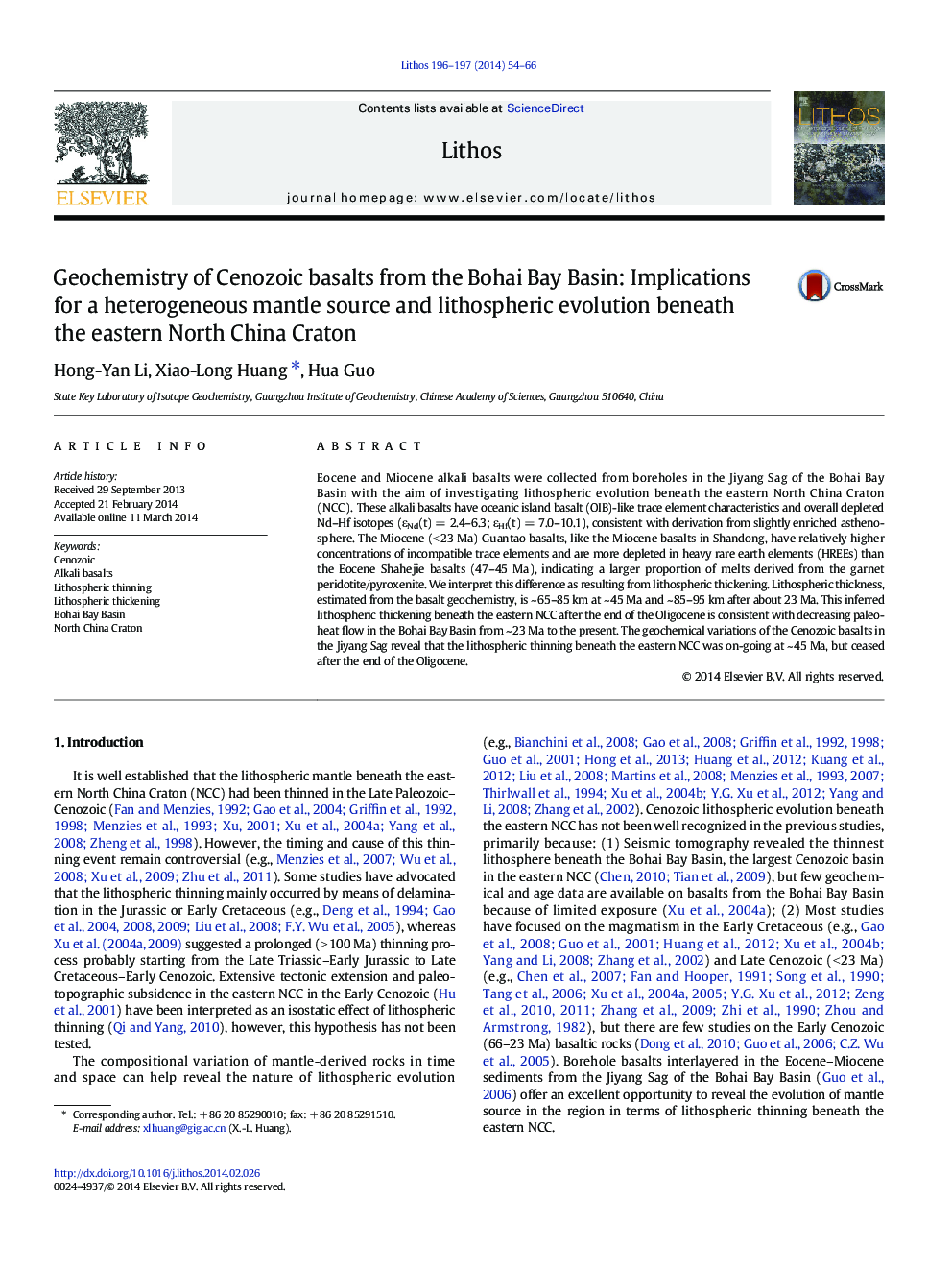| Article ID | Journal | Published Year | Pages | File Type |
|---|---|---|---|---|
| 4715973 | Lithos | 2014 | 13 Pages |
•The Eocene to Miocene alkali basalts from boreholes in the Jiyang Sag are OIB-like.•Jiyang Sag basalts were derived from the asthenosphere with an enriched component.•The lithospheric thinning of the eastern NCC was on-going during the Eocene.•The lithosphere beneath the eastern NCC had been thickened in the Miocene.
Eocene and Miocene alkali basalts were collected from boreholes in the Jiyang Sag of the Bohai Bay Basin with the aim of investigating lithospheric evolution beneath the eastern North China Craton (NCC). These alkali basalts have oceanic island basalt (OIB)-like trace element characteristics and overall depleted Nd–Hf isotopes (εNd(t) = 2.4–6.3; εHf(t) = 7.0–10.1), consistent with derivation from slightly enriched asthenosphere. The Miocene (< 23 Ma) Guantao basalts, like the Miocene basalts in Shandong, have relatively higher concentrations of incompatible trace elements and are more depleted in heavy rare earth elements (HREEs) than the Eocene Shahejie basalts (47–45 Ma), indicating a larger proportion of melts derived from the garnet peridotite/pyroxenite. We interpret this difference as resulting from lithospheric thickening. Lithospheric thickness, estimated from the basalt geochemistry, is ~ 65–85 km at ~ 45 Ma and ~ 85–95 km after about 23 Ma. This inferred lithospheric thickening beneath the eastern NCC after the end of the Oligocene is consistent with decreasing paleo-heat flow in the Bohai Bay Basin from ~ 23 Ma to the present. The geochemical variations of the Cenozoic basalts in the Jiyang Sag reveal that the lithospheric thinning beneath the eastern NCC was on-going at ~ 45 Ma, but ceased after the end of the Oligocene.
